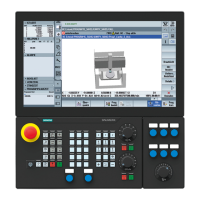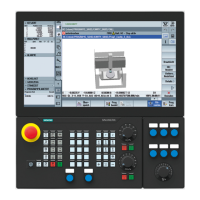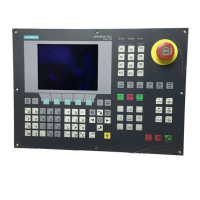Detailed Description
2.17 Jerk filter (axis-specific)
Acceleration (B2)
Function Manual, 08/2005 Edition, 6FC5397-0BP10-0BA0
2-31
To enable the jerk filter to be optimally matched to the machine conditions, various filter
modes are available:
• 2nd-order filter (PT2)
• Sliding mean value generation
• Bandstop filter
Mode: 2nd-order filter
Owing to the fact that it is a simple low-pass filter, "2nd-order filter" mode can only meet the
requirements specified above where relatively small filter time constants (around 10 ms) are
concerned. When used in conjunction with larger time constants, impermissible contour
deviations are soon manifest. The effect of the filter is relatively limited.
This filter mode has its advantages, where very large filter time constants are concerned but
the contour accuracy is only of secondary importance (e.g. positioning axes).
For historical reasons, this filter mode is set as the default.
Mode: Sliding mean value generation
Where minimal contour deviations are required, filter time constants within the range of 20-
40 ms can be set using the "sliding mean value generation" filter mode. The smoothing effect
is largely symmetrical.
The display of the calculated servo gain factor (KV factor), e.g., in the HMI Advanced "Axes"
service screen form, shows smaller values than would normally be expected for the filter.
The contour accuracy is in fact higher than the displayed KV filter appears to suggest.
When changing from "2nd-order filter" to "sliding mean value generation" filter mode, the
displayed KV factor may, therefore, drop (with identical filter time constant), even though
there is an improvement in contour accuracy.
Mode: Bandstop filter
The bandstop filter is a 2nd-order filter in terms of numerator and denominator:
+V
V
V
˭I ˭I
=
=
˭I
1
V'
=
˭I
1
V'
1
where:
f
Z
: Numerator natural freq.
f
N
: Denominator natural freq.
D
Z
: Numerator damping
D
N
: Denominator damping

